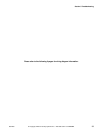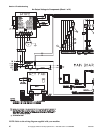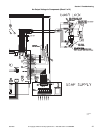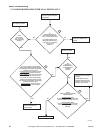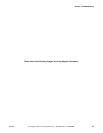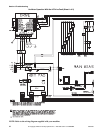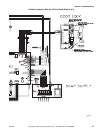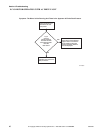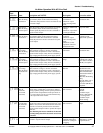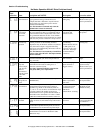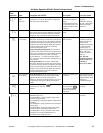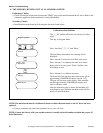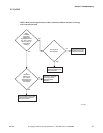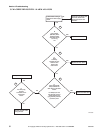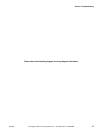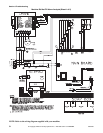
9001900 47
Section 3 Troubleshooting
© Copyright, Alliance Laundry Systems LLC – DO NOT COPY or TRANSMIT
No Motor Operation With AC Drive Fault
Operation
Panel
Indication Name Description and NOTES Check point Corrective action
Overcurrent
shut-off during
acceleration
When the inverter output current reaches or exceeds
approximately 200% of the rated current during
acceleration, the protective circuit is activated to stop
the inverter output.
• Check for sudden
acceleration.
• Check for output
short-circuit/ground
fault.
Increase the
acceleration time.
Overcurrent
shut-off during
constant speed
When the inverter output current reaches or exceeds
approximately 200% of the rated current during
constant speed, the protective circuit is activated to
stop the inverter output.
• Check for sudden load
change.
• Check for output short-
circuit/ground fault.
Keep load stable.
Overcurrent
shut-off during
deceleration
When the inverter output current reaches or exceeds
approximately 200% of the rated current during
deceleration (other than acceleration or constant
speed), the protective circuit is activated to stop the
inverter output.
• Check for sudden speed
reduction.
• Check for output
short-circuit/ground
fault.
• Check for too fast
operation of motor's
mechanical brake.
Increase the
deceleration time.
Adjust brake operation.
Regenerative
overvoltage
shut-off during
acceleration
If regenerative energy causes the inverter's internal
main circuit DC voltage to reach or exceed the
specified value, the protective circuit is activated to
stop the inverter output. It may also be activated by a
surge voltage generated in the power supply system
Check for too slow
acceleration.
Decrease the
acceleration time.
Regenerative
overvoltage
shut-off during
constant speed
If regenerative energy causes the inverter's internal
main circuit DC voltage to reach or exceed the
specified value, the protective circuit is activated to
stop the inverter output. It may also be activated by a
surge voltage generated in the power supply system.
Check for sudden load
change.
Keep load stable. Use
the brake unit or high
power factor converter
(FR-HC) as required.
Regenerative
overvoltage
shut-off during
deceleration or
stop
If regenerative energy causes the inverter's internal
main circuit DC voltage to reach or exceed the
specified value, the protective circuit is activated to
stop the inverter output. It may also be activated by a
surge voltage generated in the power supply system.
Check for sudden speed
reduction.
• Increase the
deceleration time.
(Set the deceleration
time which matches
the inertia moment of
the load.)
• Decrease the braking
duty.
• Use the brake unit or
high power factor
converter (FR-HC) as
required.
Motor overload
shut-off
(electronic
overcurrent
protection)
The electronic overcurrent protection in the inverter
detects motor overheat due to overload or reduced
cooling capability during constant-speed operation to
stop the inverter output.When a multi-pole motor or
two or more motors are run, provide a thermal relay
in the output side of the inverter.
Check the motor for use
under overload.
• Reduce the load
weight.
•For the
constant-torque
motor, change the Pr.
71 setting to the
constant-torque
motor setting.
Inverter
overload shut-
off (electronic
overcurrent
protection)
If a current of more than 150% of the rated output
current flows and overcurrent shut-off does not occur
(200% or less) inverse-time characteristics cause the
electronic overcurrent protection to be activated to
stop the inverter output in order to protect the output
transistors.
Note: Resetting the inverter initializes the internal
heat integrating data of the electronic overcurrent
protection.
Check the motor for use
under overload.
Reduce the load
weight.
Fin overheat If the cooling fin overheats, the overheat sensor is
actuated to stop the inverter output.
• Check for too high
ambient temperature.
• Check for cooling fin
clogging.
Set the ambient
temperature to within
the specifications.



